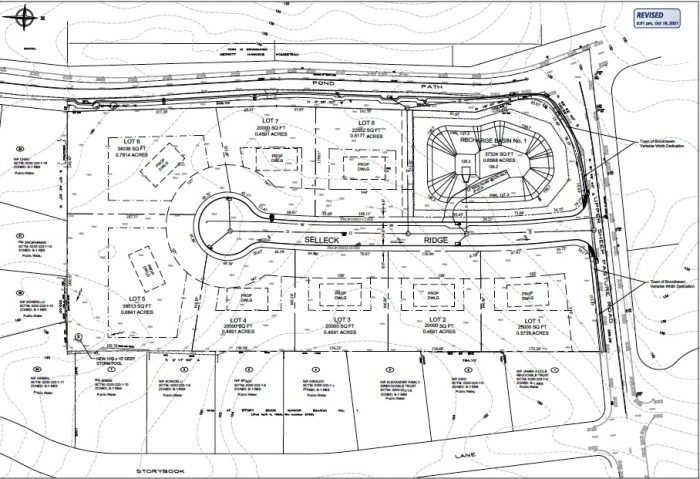Alternatives to recharge basins must be considered for new developments
By Jonathan Kornreich
Numerous residents and organizations within my council district have expressed concerns to my office regarding the Winmar Homes application to develop the southeast corner of Pond Path and Upper Sheep Pasture Road in East Setauket. The current proposal is for an eight-lot residential subdivision on 6.63 acres, along with a recharge basin and the construction of a cul-de-sac into the development from Upper Sheep Pasture Road.
Setauket is one of the oldest areas in the Town of Brookhaven with historic sites from the American Revolutionary War time period and older. Directly across the street from the Selleck property is the Merritt-Hawkins House — at 512 Pond Path, East Setauket — a town-owned property and one of the earliest homes in Setauket, originally belonging to the Hawkins family. The property was designated a Brookhaven landmark in April 2005 and was added to the New York State and National Registers of Historic Places in August 2007. Immediately adjacent to the Merritt-Hawkins House is Nassakeag Elementary School. The Selleck property is one of the oldest farms in the area and, together with Merritt-Hawkins House, formed the Merritt-Hawkins Homestead, a significant part of our local history.
The community and my office have made several requests relating to this property, including an appeal to save the old Selleck farmhouse or clustering the houses to make room for open space preservation. The most urgent of these requests, however, and the one which has spurred the greatest alarm within the community, is the proposed siting of a recharge basin, or sump, on the highly visible corner of Upper Sheep Pasture Road and Pond Path.
Historically, the creation of sumps like this has been a common approach, resulting in over 1,300 sumps throughout the Town of Brookhaven. In addition to being a maintenance burden on the Highway Department and a consistent source of complaints from residents, these recharge basins do little to remediate the water being funneled back into our aquifers, especially with respect to the removal of nitrogen and other substances.
Other solutions to stormwater management are available. The practice of Low Impact Development incorporates an “all of the above” strategy which includes rain gardens, bioswales, permeable surfaces and dry wells, elements which are meant to recreate and enhance natural processes. By reducing the movement of water across paved surfaces, these elements assist in the prevention and capture of surface contaminants before they flow back into a sump, whose sole function is to get water back underground as quickly as possible.
Clearly, practices such as LID require a nuanced approach which is sensitive to each site’s specific topography, soil composition and other factors. I will continue to advocate for the adoption of this more thoughtful approach, both on the Selleck site and as a part of the town’s planning process going forward.
Town of Brookhaven Supervisor Ed Romaine [R] has been highly supportive of this approach and has facilitated discussions with professionals in Town Hall to explore other options. There is no question that a sump is only one of several modalities for managing stormwater runoff, and we are hoping that more time is set aside to study this issue and develop a strategy that all stakeholders will be comfortable with.
The town Planning Board is an independent body, and members of the Town Council cannot exert undue influence over their deliberations, but I cannot remain silent while the wishes of the community I represent are overlooked. My hope is that the developer and the Planning Board will come together to create a site plan which is mutually acceptable to all stakeholders, including the residents.
Jonathan Kornreich [D] is town councilmember for Brookhaven’s District 1 and has experience in the home construction industry.







